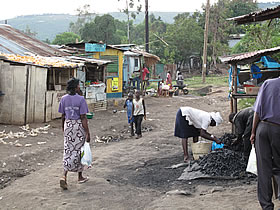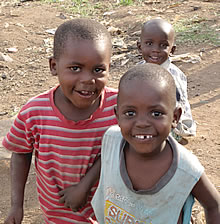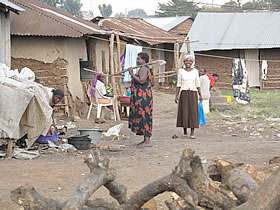|
by Stacy Trevenon

Obunga neighborhood, Kisumu, Kenya
Work is underway to revitalize the Community Health Information Centers (CHICs) program in Kenya. Using technology upgraded since the program's beginning nearly nine years ago, WiRED is supplying new computers and educational material in two of its facilities in Kisumu. The goal is to update the medical information and broaden the reach of the program to grassroots communities in this region, near Lake Victoria.
 Beginning in 2001 WiRED developed a network of 19 centers in Kenya, working in partnership with community-based organizations. The work was started with a developmental grant from the U.S. National Institutes of Health. At that time, health and medical information was primarily on CDs; today, that information has shifted almost entirely to the Web. The Web isn’t available to the Centers, so WiRED has developed a series of training courses (called modules) that covers a broad range of health topics. The course material is installed on hard drives and, thereby, avoids the need for Internet access.

Obunga neighborhood, Kisumu, Kenya
A four-person team—consisting of a physician, an editor and two information technology professionals—developed the first installment of 50 modules and is working on an additional 70 topics. The process begins with Miriam Othman, M.D., who also holds a Masters of Public Health (M.P.H.) degree. Dr. Othman researches and writes the modules and sends the text to Tom Turkle, a technical editor in Kansas City. Edited text then goes to Max Hurwitz, in Los Angeles, who shapes the modules into interactive programs. Finally, the completed modules go to Brian Colombe, also in Kansas City, where the programs are configured into libraries on computer hard drives.
The new CHIC program, funded almost entirely by individual donors, will serve as a working model for potential funders. The aim is to demonstrate the capacity of the program to serve large numbers of grassroots people with information that engages people in their own health. About 10 percent of the material is devoted to HIV/AIDS prevention; the rest covers illnesses and ailments, simple to serious, that affect people in East Africa. To date, the WiRED CHIC programs have reached more than one million people.
Editing by Allison Kozicharow, layout by Brian Colombe.
^ Back to the Top
|



